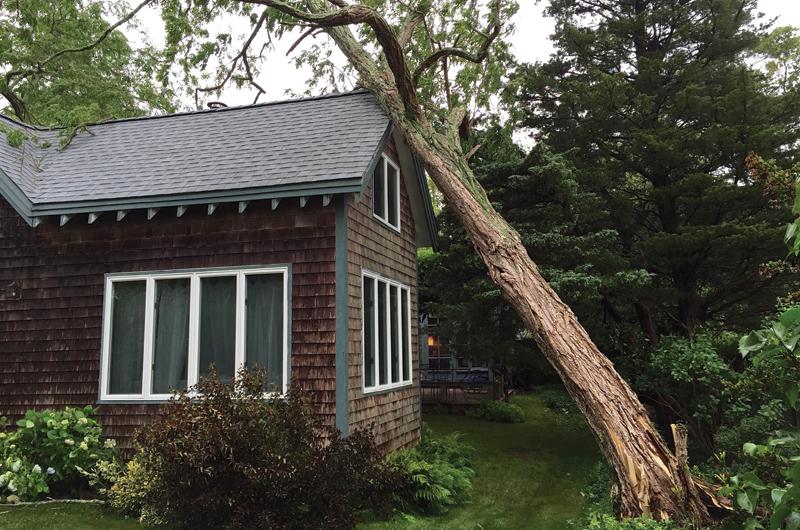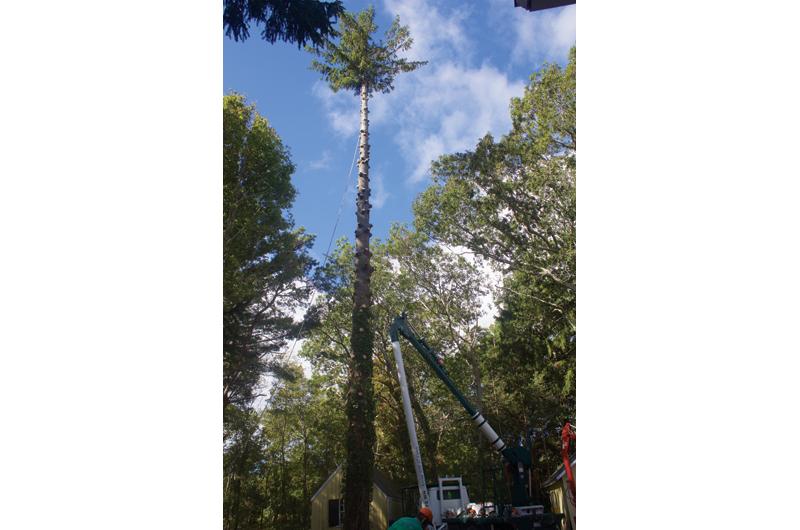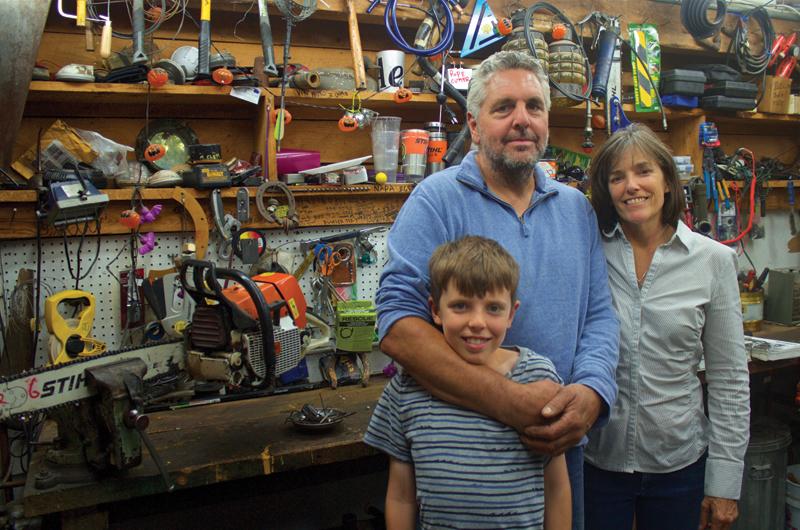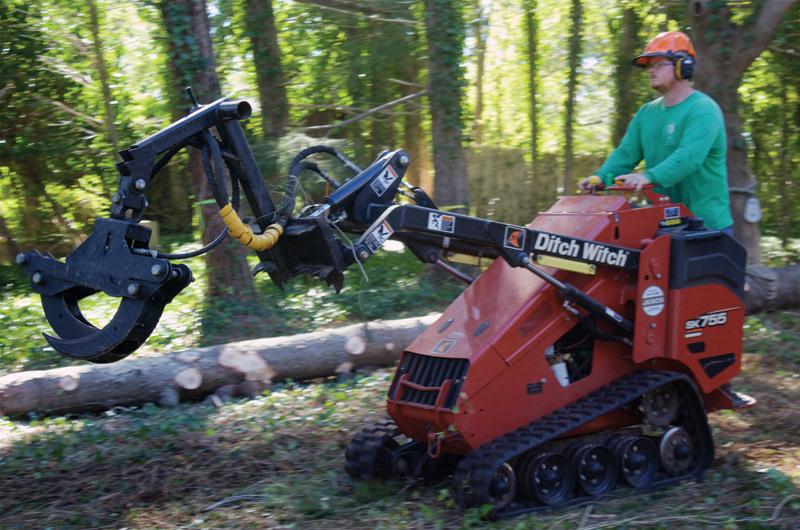Trees. We treasure their beauty and variety, feel grateful when they grow bravely along barren roads or shield our property. We don’t hesitate to climb them, hang swings from their limbs, or build small houses in their branches. And like lovers who with confidence scratch initials into bark, we expect our trees to last forever.
They do not, yet trees lost have a renewed life, reabsorbed by nature or transformed by humans into another form.
Last summer during a brief, powerful gale, an old-growth locust that for generations had provided shade and privacy in our yard met an unwelcome end. Its leaves caught wind like a sail. The fractured trunk shrieked as it splintered. We were lucky. Only a dozen feet from our house, the locust had no room to gain velocity as it pitched onto the roof peak. The building shuddered, then settled to shoulder its new burden. Of course it was Sunday, an inauspicious day for toothaches or plumbing emergencies or having a tree propped against your house.

Again we were lucky. My husband called Clements Tree Service, which had previously done less dramatic work for us. Mark Clements came immediately to assess the damage, then returned a couple of hours later with two men he’d persuaded to join this Sunday gig. They also brought a bucket truck with a telescoping boom; a log and combination crane truck, a mini skid steer, and a powerful chipper followed. Soon a chainsaw concert serenaded the neighbors. The yard became a frothy foam of leaves and limbs, while with impressive precision a mighty red claw lifted the trunk. It took nearly a quarter of a million dollars worth of equipment to get rid of the tree. It also took nerve and a whole lot of expertise.
Four more hours and the tree had disappeared, all debris cleared. Clements had taken each family member up in the bucket truck for a thrilling bird’s eye view of the neighborhood and Sound. He had shown us the sawdust produced by carpenter ants that had made our locust vulnerable. The crew had cut major branches and stacked them to feed our wood stove, the only heat source in our seasonal house. Our tree was down but not over. It would be put to good use.
A couple of months later Clements agreed to let me observe as the crew took on a big clearing job, with a dozen old growth trees – most sixty to one hundred feet – to be felled. I promised to stay out of the way. Built in 1866, the venerable Luce house on Pine Street, Vineyard Haven, had remained in the family for almost 150 years before changing hands. Many trees, primarily spruce, had grown to tower over the house during that period, and the new owners wanted sunshine and space, probably the most prevalent reason for people to cut trees. “Too many trees make too much shade, creating moisture and mold,” Clements explains, “a legitimate reason for cutting,”
To the uninitiated observer the site looks chaotic, but it’s actually as well choreographed as a ballet, with four dancers. Each crew member understands exactly where the others are, what to do, and where to be. The audience – me – sticks close to the house, rarely venturing into the work field. Noise comes in long bursts. Chainsaws scream, trees whoosh and crackle to the ground, the nimble mini skid steer – a Ditch Witch – roars and clanks as it wrestles branches, the chipper whines as it crunches. And beneath all this motion and cacophony lies order, something Clements insists on. He wants no accidents, no chainsaws run over, no one tripping on branches or stray pieces of wood. He’s a self-described orderly person, who says in a rueful tone, “I’ve learned from mistakes.”

On this site not only will the owners have the space they want, but also the tallest spruces are destined for a proud new life as masts for The Seeker, a ship being built in Vineyard Haven. Ted Box – boat builder, artist, furniture maker, and sometime dance instructor – has been building the seventy-foot scow schooner since 2011. Although the project experienced delays while he underwent successful treatment for throat cancer, Box is moving ahead on the Vineyard Haven harbor beach, near Ralph Packer’s fuel tanks. At the old Luce house, the tree crew brings down the spruce, cleans off branches and stubs, and by afternoon two trunks, astonishingly long, lie strapped onto a flatbed almost doubling the length of the truck. By the next morning they have been laid to rest beachside, where they will season and await shaping, planning, and stepping. The Seeker will have strong, straight, locally grown masts.
It’s fitting that a man who takes down trees lives on a road called Oak Lane. For more than thirty years Clements has been changing the face of the Vineyard, clearing pathways, opening vistas, creating glens where overgrowth once ruled. Driving to his house the pavement ends, and a mile down the dirt road – now in woods, of course – comes a driveway. You know you’re in the right place when you see a twenty-foot pyramid of logs and split wood, more than a hundred cords of it.
Clements is leaning his big frame against the door of his truck, his craggy face intent on the advice of his friend and mentor, master arborist Richard (Dick) Manley, whose roughly fifty-five years of experience identifying the health and disease of trees has made him a legend. Climate change and infestations are affecting the life of trees now much as 5,000 years ago, when scientists believe a warming period lay behind the massive death of oaks on the Island and the Cape. Beech trees grew in their place and thrived until the time of the first settlers, presumably dying off because of human activity, to be replaced once again by oaks. On Island, trees today are stressed and dying from gypsy moths, caterpillars, and red and black oak wasps.
Next to Clements’s clapboard house, chickens wander around a fenced garden, keeping away deer and fertilizing the soil while they peck away at herbs. Clements’s wife and business partner, Sue, uses an old-fashioned fruit picker to ease autumn apples from a ladened tree into the basket, while their twelve-year-old son, Mark Jr., gathers stray apples from the ground. (Clements also has two adult daughters from a previous marriage, Jordan and Marie.) Looking at Sue, petite and graceful, you’d never guess the speed at which she can open up an oyster or a littleneck: she was once the Florida State Oyster Shucker champion. And she can grind a stump, run a chipper, and wield a chainsaw. In order to get to a job on time, often she has to drive little Mark to school in the dump truck or the chipper. Clements calls her his best worker. And she keeps the books.

Inside, at the kitchen table, Sue brings apple slices for comparative tasting since their single, bounteous tree produces three different varieties – a sweet green, a tart red, and a red-on-green hybrid. The living room walls hold artwork, and in an alcove, a lovingly finished table of salvaged wood doubles as a dinner and Ping-Pong table. It is a cozy house for a family of three, quite a contrast to Clements’s childhood. He grew up in Oak Bluffs, where his mother not only raised the family of six boys and four girls, but also took on more kids as a cub scout den mother. His father, Albert Clements, served three terms as a selectman, worked as a hospital physical therapist, had a house-wrecking service, and in his basement installed a bowling alley and built an airplane.
Clements was already working for the Mansfield Tree Service, a long-time Island enterprise that cleared power and phone lines, when his father bought that business for his sons. In the hierarchy of sibling life, his older, less experienced brother became his boss. Clements taught him skills like running the Bobcat and stump grinder, but after a while he knew it was time to set out on his own. His father gave him an old bucket truck, and with another old-but-newer truck he cobbled together a working rig. “I’d save a little money and put in a hydraulic hose, and then save a little more and put in something else, dollar by dollar.”
Those early years were difficult, personally and professionally. Recently divorced, Clements’s barn burned down and the IRS put a lien on his house. Then, in 1991, Hurricane Bob – one of the century’s worst storms – slammed into the Vineyard, hurling boats ashore, stripping shingles off roofs, ripping out docks, downing power and phone lines. And felling hundreds of trees. Branches filled yards and sidewalks. While grocery and hardware stores made money in anticipation of the storm, tree services were overwhelmed with work after. “It was night and day,” Clements says, shaking his head in remembered wonder. “I had just gotten a generator from a guy, paid him $50 a month, and I had just paid it off. So I had a generator, I had spotlights, I would work from dawn for NStar, and then I would work privately nights until nine or ten. And I’d do the same thing seven days a week. That’s how I got back on track.”
Many jobs came his way, including the memorable taking down of the massive linden tree, pride of Vineyard Haven. Estimated to be more than one hundred years old, the tree by the Capawock Theatre was a fabled Main Street meeting place, a spot for bake sales and street concerts. It died of old age, perhaps helped along by an electrical storm that set the white Christmas lights that encircled it ablaze – “like St. Elmo’s fire,” says the artist Simon Hickman, who bought what was salvageable of the tree and made a bar for his West Tisbury pool house. But in 1996 it was Clements who brought it down, limb by majestic limb.

Now Clements is so busy that his only quiet time is in church – he and his family are committed Catholics – or in the very early morning. Before the rest of the household is up, he feeds the animals and, in winter, the wood furnace. Then he goes into his shop where the hand-hewn beams are made of Hurricane Bob salvaged wood, and at his black tupelo workbench – locally known as beetlebung – he sharpens chainsaws, five or six each morning, with twenty-five teeth on each chain. Here he finds solitude and a chance to think.
Trees are not forever, but they live on, or sail on, or become chips that carpet paths to a beach, or are split into logs that fuel a wood stove, or are milled and finished into a handsome table, or shaped by an artist to become a bar in a pool house.
For Clements, at the moment of felling, the work is challenging, dangerous, demanding. But sharpening his saws in his shop, feeling part of this continuum of tree life on the Vineyard, where he has deep roots, brings him moments of grace.





